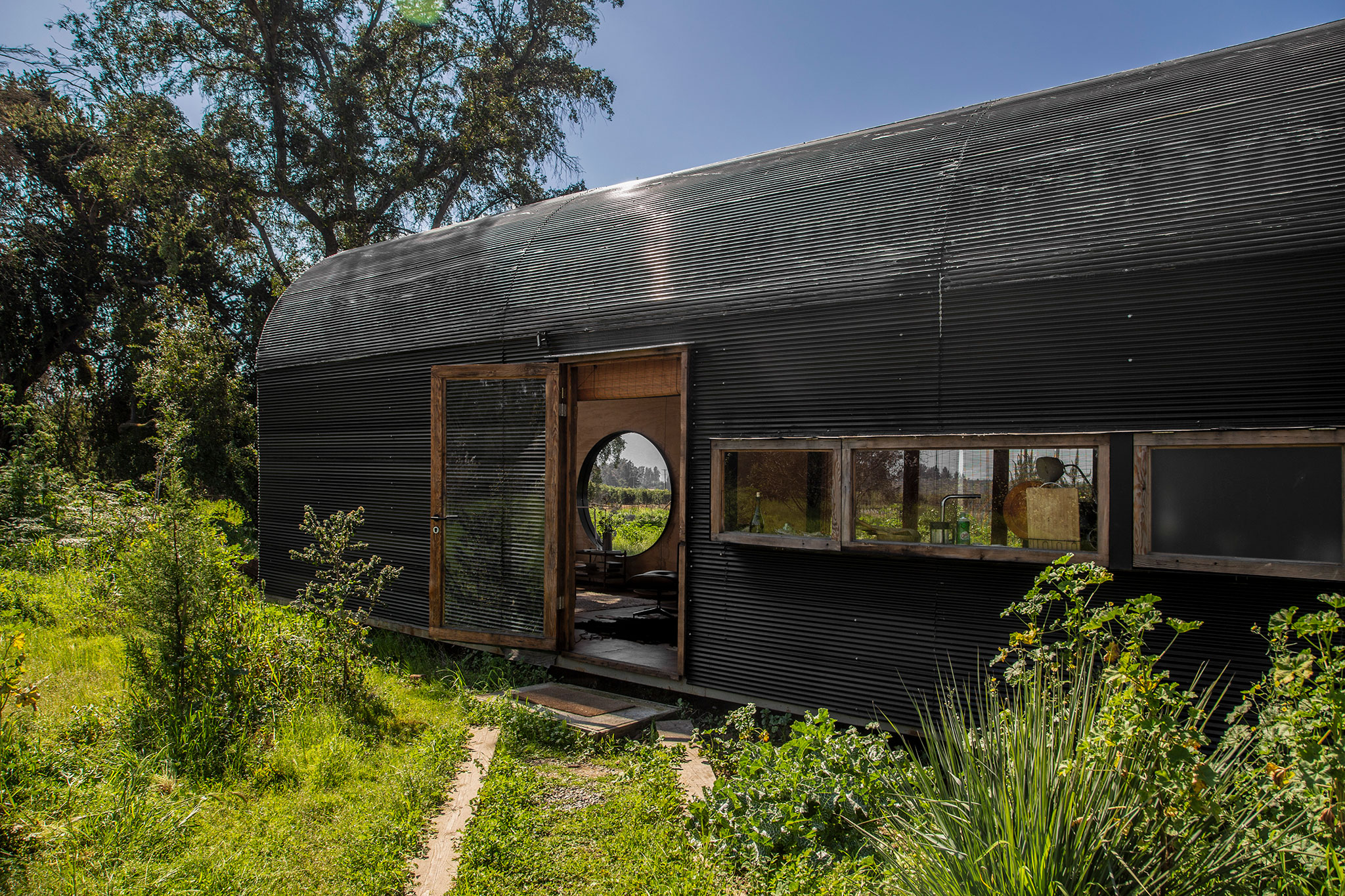
The Catalejo house, designed by Tololo Ugarte, features a circular roof made of steel and wood, which allows for a double height inside. The circular shape of the project allows for a direct connection with the exterior landscape, generating a sense of continuity between the interior and the monumental landscape of majestic trees.
This constant dialogue between the interior and the exterior invites us to reflect on the interaction between humans and nature, proposing a new way of inhabiting spaces, which become frames, where each window presents a new changing view.
Constructively, the materials have been specifically selected to generate a mimesis with the surrounding landscape, allowing the house to merge with its context. This idea of integrating the house into the landscape arises intending to minimise the visual impact of architecture on nature, generating a deep awareness of the place in which one lives

Catalejo by Tololo Ugarte. Photograph by Mauricio Duarte Arratia.
Project description by Tololo Ugarte
Catalejo is a work of architecture that emerges from its context. When we first saw the land, one point of interest was obvious: a kind of oasis of four trees that are more than 300 years old. The rest of the land was presented as a very fertile pasture that is extremely sensitive to the seasons of the year. In summer, it is a rather desert-like landscape; however, in winter and spring, meters of so-called undergrowth sprout from the ground, flanking the house and making it float in an environment that, at ground level, is flat, but where the vegetation provides an irregular and unexpected relief that changes.
Having experienced this, it seemed that the house should, first of all, be suspended from the ground in such a way that the grass would grow like a green blanket that would enhance the sensation of floating in this sort of vegetal lagoon. It was also important to return to the first point of interest, which were the old quillayes and molles, which, unlike the rest of the vegetation, constituted a monumental but motionless landscape, of a noble and perpetual character, which led to placing the house facing these large living statues and keeping a fair distance that, together with the double height and the vaulted ceiling, managed to capture 100% of the forest and bring it inside the enclosures.

The circular shape of the house ultimately allows the landscape to become an extension of the interior spaces, generating a feeling of continuity. This architectural decision suggests that the natural environment is not just a backdrop, but an active element that redefines the perception of space.
The materials have been selected with a focus on visual mimesis, allowing the architecture to merge with its context. This choice seeks to minimize the visual impact of the construction, integrating the work into the landscape.
Overall, Catalejo is not only a habitable space, but an architectural experiment that invites us to reflect on the interaction between humans and nature. By bringing the landscape inside the house, a constant dialogue is generated that transforms the experience of living. The spaces become frames that delimit changing views, where each window is presented as a lens that focuses and amplifies the natural environment, thus fostering a deeper awareness of the place in which one lives.




















































